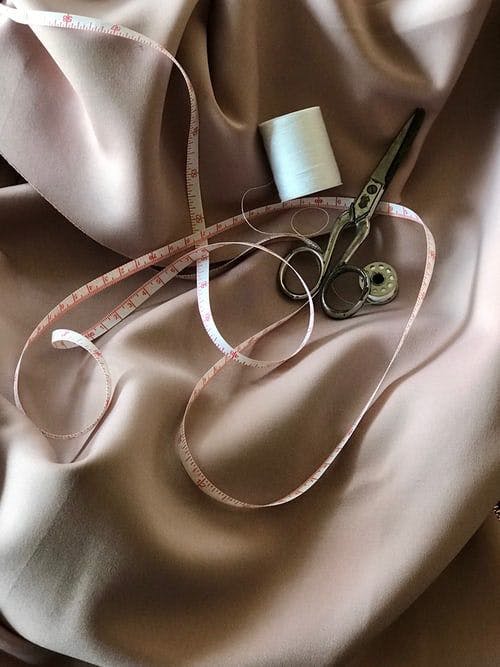The truth is, even though you have your haberdashery, pattern, and fabric ready for your next project, you can’t start sewing immediately. Beginner sewing machines may come in very handy as you have to prepare a few things before you begin. In this article, we share with you just what to do.
Carve your pattern out
To do this, you first need to measure yourself to select the correct size for your sewing assignment. Even if you’re between sizes, the benefit of constructing your clothing is that you can tailor-make your clothes to suit your body shape.
After this initial step, you’re able to examine the pattern you plan to use against other materials necessary for the garment construction. You’ll need to work carefully to highlight the silhouette of your shape on the paper pattern to ensure the cutting process is smoother. After all this, you can proceed to cut out all the various pieces.
Fabric preparation
Before you begin sewing, your ideal task would be to dry, wash and iron the fabric you’ll be using. If you don’t, the material may shrink a little when you give it a first-time wash. And that’s something you don’t want.
To avoid this, make sure you make a note of the laundering instructions your fabric has when you buy it.
If for whatever reason, washing it is not an option, rather iron the material using full steam (if that is conducive for the fabric you have chosen). Nonetheless, ensure you iron any wrinkles out so that your fabric becomes smooth and lovely.
Lay your fabric out
After washing and pressing your material, you need to lay it out on a flat and dirt-free surface. Make sure you have the printed part of the material facing upward (the side that is printed is also known as the right side). Once done, you need to fold the material in half. Doing this allows you to cut a perfectly symmetrical piece.
In the process of folding the material, put the two selvages together. The selvage is known as the corner of the woven material that stops the material from raveling. After this, you need to straighten your fabric again to ensure that there are zero folds.
Lay your pattern out
Put your patterned pieces on your material. Read the recommended layout plan on your instruction booklet, to ensure you use the material to the fullest. For every pattern piece, you will find there are instructions on how to position and lay it out. So just follow them.
Chop your fabric
Lastly, it’s time to slice out the various fabric pieces. To do this well, you need to be standing and also don’t pick up the fabric from the surface while you cut, this can be hard but it is doable.
Also, be mindful there are many special scissors for trimming material. So you don’t have to use your standard household scissors. Make an effort to cut big pieces to achieve a better outcome.
But if you have restricted space, you may want to cut the rough outline out first. This is to ensure you have a compact piece to help you with your work.
Good luck with preparing for your first lesson and happy sewing!


Comments are closed.